ALEX HOLLINGS
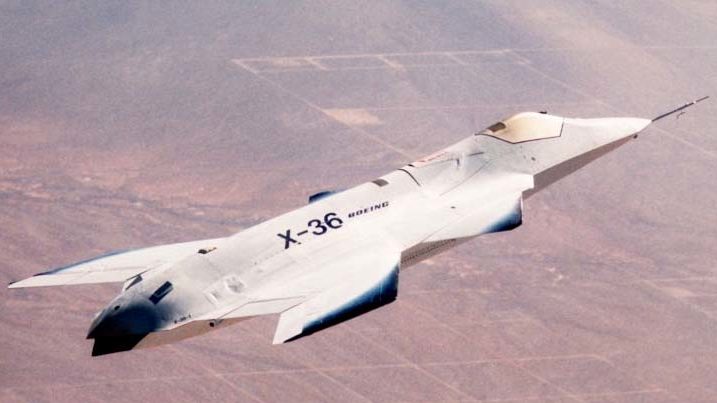
The United States operates more stealth aircraft than any other country on the planet, both in terms of volume and variety, with three publicly disclosed stealth platforms in service and at least three more at some stage of development.
But for every F-22 Raptor, F-35 Joint Strike Fighter, or B-2 Spirit, there are a number of stealth jets that never found their way into operational hangars either because of program cancellations or, often, because they were never intended for combat service at all: Sometimes, programs aim to prove advanced new technological concepts, test classified new systems, or prove the efficacy of a capability meant for inclusion in other aircraft.
Because of the very nature of the technology, new stealth aircraft are usually developed under the utmost secrecy. The F-117 Nighthawk, as one famous example, was operational for years before the American government acknowledged its existence. Likewise, prototypes, technology demonstrators, and even programs meant for service but canceled for various reasons often remain shrouded in mystery for years, even after they stop flying.
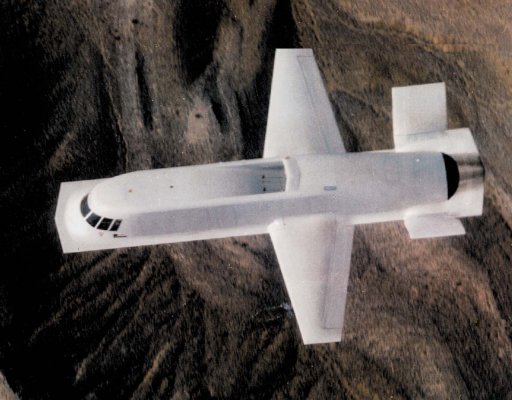
Northrop’s Tacit Blue stealth technology demonstrator.
Still commonly referred to as “Black Programs,” the Pentagon has a long and illustrious history of funding the classified development of advanced technologies. Today, the most secretive efforts fall under what’s commonly referred to as “Special Access Programs,” or SAPs, for which the distribution of information is limited even among those with the highest-reaching security clearances. But even within the world of SAPs, there remains another, even murkier designation: Unacknowledged SAPs, or USAPs. These efforts are so secretive that briefings are kept off paper and delivered by word of mouth only to the highest levels of government.
As we discussed in our in-depth coverage of the legend surrounding America’s seemingly mythical Aurora reconnaissance plane, many of these aircraft may never be revealed at all… But a few of these highly secret stealth aircraft have managed to peek out from behind the Black Budget veil, and some may have slipped beneath your radar since their disclosure.
BOEING’S BIRD OF PREY
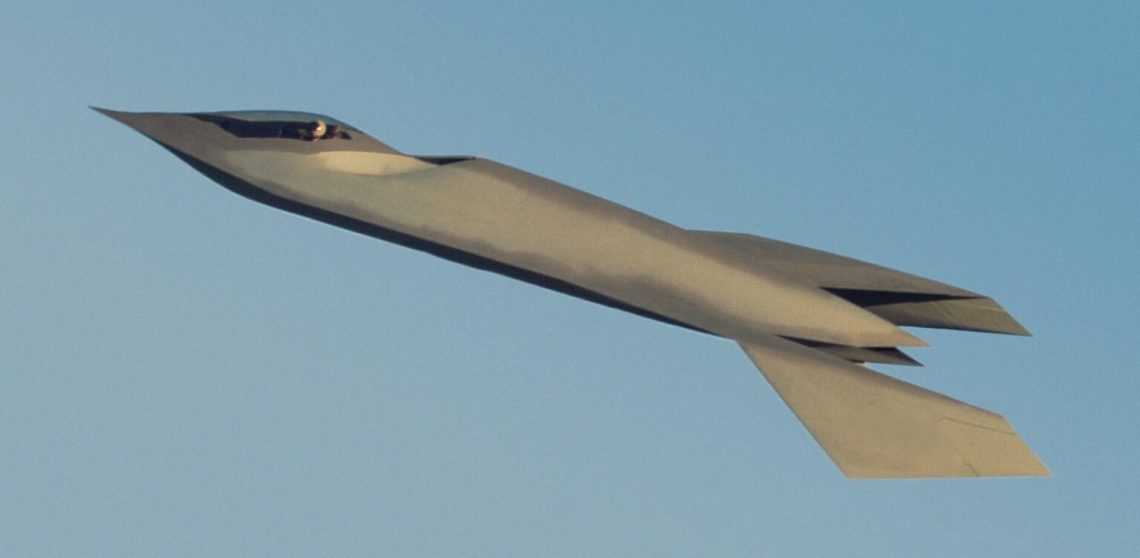
(Boeing)
Throughout the 1990s, a team of engineers from McDonnell Douglas’ Phantom Works (which later came under Boeing when that company acquired McDonnell Douglas) developed and tested a unique stealth aircraft shrowded in the secrecy of Area 51. This aircraft was known to most as the Bird of Prey. Unlike most stealth programs, the Bird of Prey, developed under the alias “YF-118G,” wasn’t aiming for operational service, but was a stealth technology demonstrator: elements of its design and production process are still working their way into Uncle Sam’s hangars to this very day.
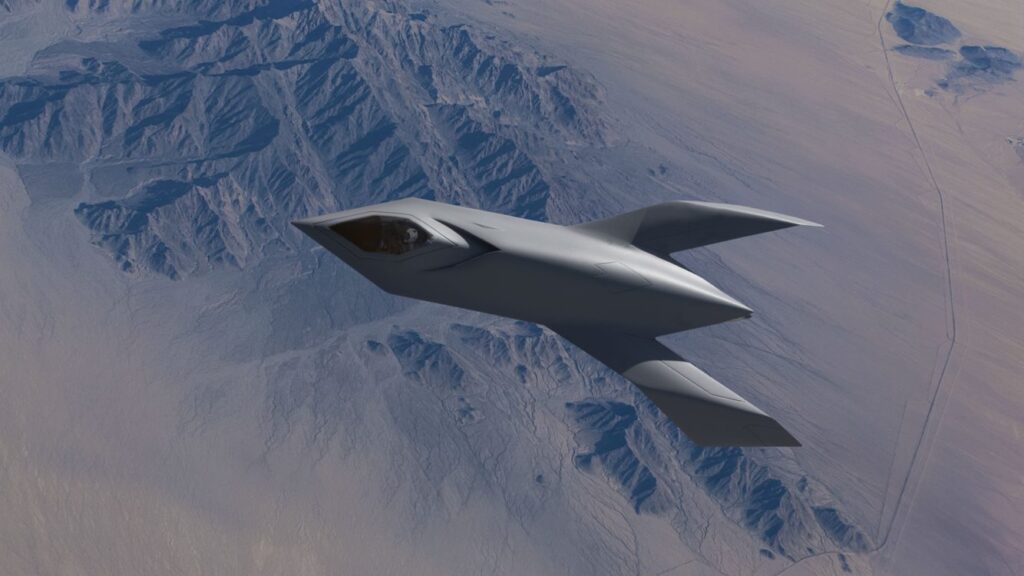
Boeing’s Bird of Prey stealth aircraft demonstrator.
Perhaps the most lasting contribution this incredible and exotic airframe made to America’s defense apparatus was in its audacity and subsequent success. While most stealth aircraft are known for their high cost, the Bird of Prey went from a pad of paper to the skies over Area 51 for less than the cost of a single F-35 today. The entire program cost just $67 million from start to finish.
Powered by a single Pratt & Whitney JT15D-5C turbofan engine, which produced just 3,190 pounds of thrust, the Bird of Prey wasn’t a fighter, but it did prove that Boeing had the chops to produce a stealth aircraft while advancing technologies linked to rapid prototyping, and single-piece composite material construction.
MCDONNELL DOUGLAS’ A-12 AVENGER II
 T
The McDonnell Douglas A-12 Avenger II.
On 13 January 1988, a joint team from McDonnell Douglas and General Dynamics was awarded a development contract by the Navy for what was to become the A-12 Avenger II (not to be confused with Lockheed’s proposed A-12 of the 1960s). Once completed, the Navy’s A-12 would have been a flying-wing design reminiscent of Northrop Grumman’s B-2 Spirit or B-21 Raider, though much smaller. The sharp triangular shape of the A-12 eventually earned it the nickname, “the flying Dorito.“
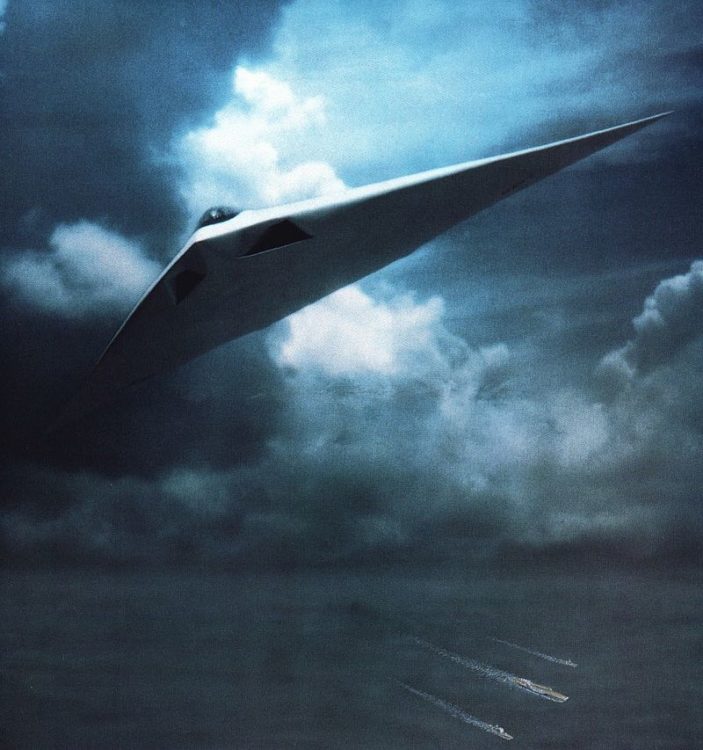
An artist’s concept of the McDonnell Douglas A-12 Avenger II.
The Navy planned to saddle the platform with an “A” prefix to demonstrate its use against ground targets despite actually having the ability to engage air targets with its two internally stored AIM-120 AMRAAM air-to-air missiles. In other words, the A-12 Avenger II would have been America’s first real stealth fighter.
By 1991, however, the A-12 was significantly overweight, over budget, and behind schedule, leading to its unceremonious cancellation.
BOEING’S MODEL 853-21 QUIET BIRD
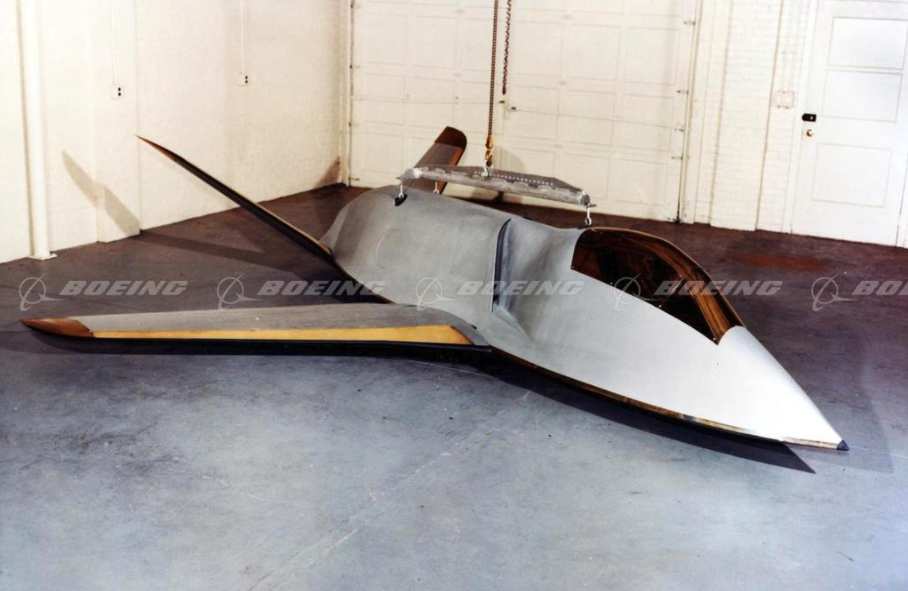
(Boeing)
The largely forgotten Model 853-21 Quiet Bird is a prototype stealth aircraft that predates the first flight of the Have Blue – F-117’s precursor – by nearly 15 years.
The effort began as a study into developing a low-observable aircraft to serve as an observation plane for the U.S. Army.
Throughout 1962 and 1963, Boeing experimented with stealth aircraft design concepts for the Quiet Bird, incorporating different shapes and construction materials in an effort to reduce the jet’s radar cross section (RCS) long before Denys Overholser at Lockheed’s Skunk Works would develop the means to accurately calculate an RCS without placing the aircraft in front of a radar array.
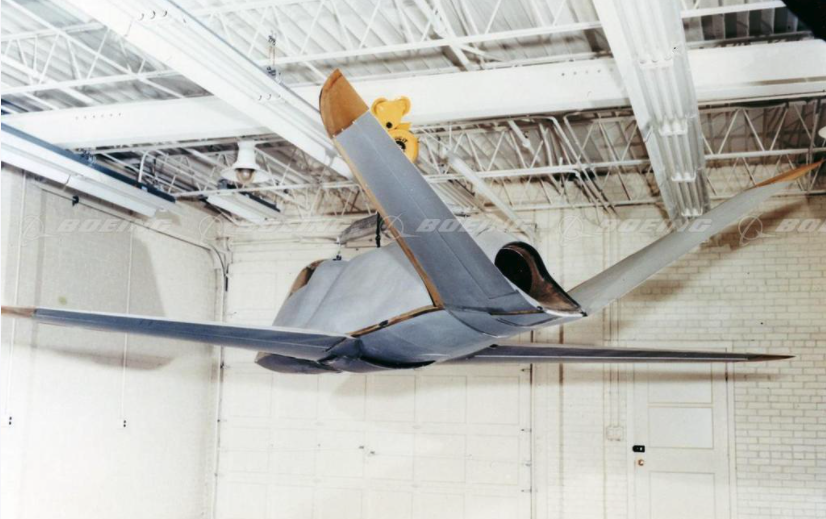
(Boeing)
Although Boeing’s tests did indeed prove promising, the Army didn’t fully appreciate the value a stealth aircraft could bring to the fight and the program was ultimately shelved. However, Boeing has credited lessons learned in the development of the Quiet Bird for some of the success it would later find with the AGM-86 Air Launched Cruise Missile.
NASA AND BOEING’S X-36 TAILLESS FIGHTER AGILITY RESEARCH AIRCRAFT
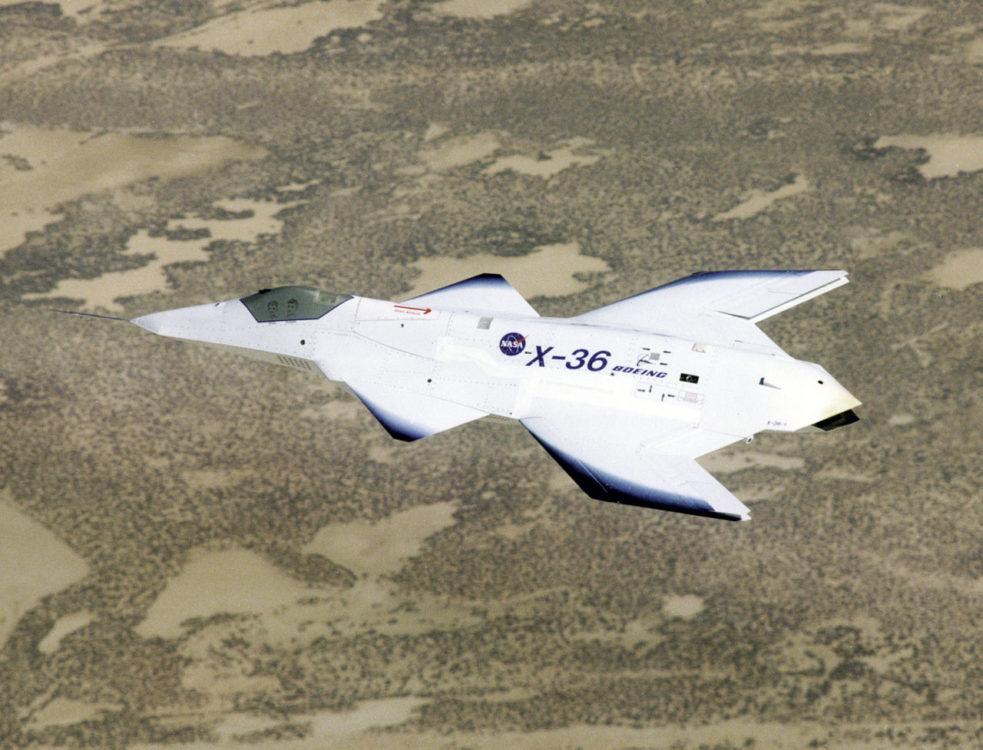
(NASA)
Like the Bird of Prey, the X-36 program wasn’t about fielding a new stealth aircraft for combat, so much as for maturing the technologies that may eventually find their way there.
Today’s stealth fighters are extremely difficult to target, but are not very difficult to spot and track using even dated radar arrays. Because of the performance requirements of a fighter, jets like the F-35 and F-22 need components like large jet inlets and vertical tail surfaces; yet, these can be omitted from less aerobatic stealth aircraft like the B-2 Spirit. These components don’t compromise a stealth fighter’s low-observability against high-frequency targeting arrays, but do so against low-frequency early-warning radars that aren’t capable of providing a target-grade lock.
In the mid-’90s, NASA and McDonnell Douglas (later Boeing) teamed up to try to bridge the gap between the stealth capabilities of flying-wing designs like the B-2 and aerobatic fighters like the F-22. Their X-36 was designed to fly without the empennage, or tail assembly, found on most fighters.

(NASA)
The X-36 was built to a 28-percent scale of a full-sized fighter, measuring just 19 feet long. It used a canard forward of the wing, split ailerons, and thrust vector control to help compensate for the missing tail. A pilot on the ground controlled the aircraft using a heads-up display connected to a nose-mounted camera.
The X-36 flew a total of 31 successful flights over just 25 weeks, racking up 15 hours and 38 minutes of flight time utilizing four different flight control software iterations.
No comments:
Post a Comment